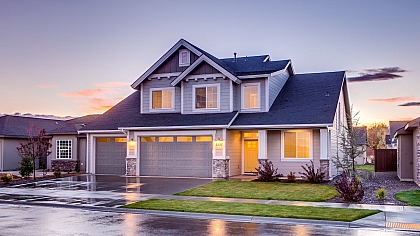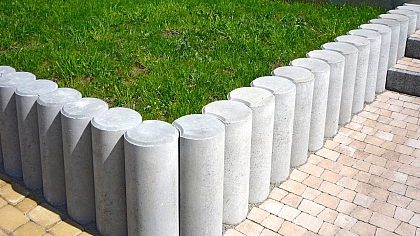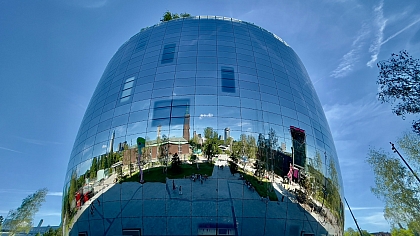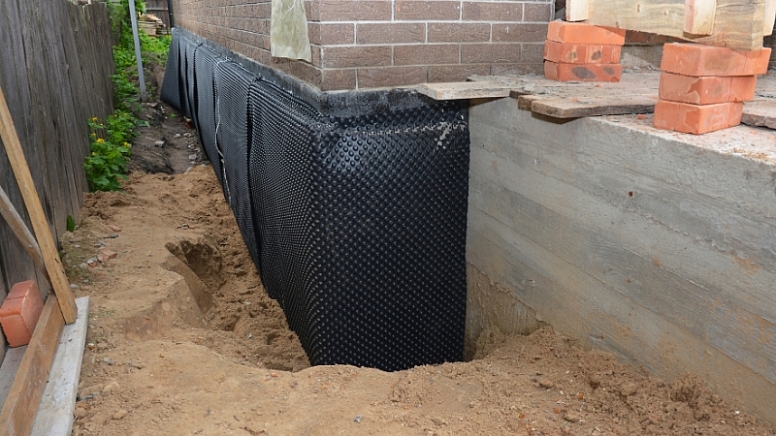
Waterproofing Method for Basements
Expert Solutions Explained
Basements often become problem areas due to moisture infiltration, a common issue for many homeowners. Water can enter basements through cracks, gaps, or porous concrete affected by high groundwater levels or poor drainage.
Choosing the right waterproofing method depends on how water enters and the intended use for the basement.
By focusing on proactive approaches, homeowners can effectively safeguard their basements against moisture damage.
Effective waterproofing strategies vary based on the water source and basement use. Interior sealants are suitable for minor seepage, providing a cost-effective solution by sealing basement walls and floors from within. For more severe water issues, exterior methods, such as excavation and applying a waterproof sealant to foundation walls, are highly effective.
To determine the best waterproofing method, assessing the specific issues in the basement is essential. Factors such as the severity of water intrusion, budget, and long-term plans for the space should guide the decision-making process. Proper waterproofing not only protects property but also enhances the integrity and value of the home.
Why Is Basement Waterproofing Critically Vital?
Basement waterproofing is crucial in safeguarding a home from potential water-related damages. Water infiltration can compromise the structural integrity of a building, creating cracks and weakening foundations. This protection helps prevent costly repairs and enhances the overall durability of the property.
Another significant concern is mould and mildew growth. Moist environments provide the ideal conditions for these harmful fungi to thrive. The presence of mould poses health risks, including allergies and respiratory issues for inhabitants. Waterproofing minimizes moisture accumulation, reducing the likelihood of mould development.
Additionally, a dry basement allows for utilization as functional living space or storage. By keeping water at bay, homeowners can maintain a comfortable, usable area free from dampness and odours. This can contribute to an increase in the property's value.
Financial savings play a crucial role in the importance of waterproofing, as avoiding water damage can prevent unexpected expenses. Protecting a basement from potential water problems is a proactive measure toward financial security and reduced maintenance costs in the long term.
Finally, peace of mind is an often overlooked benefit. Homeowners can rest easy knowing their investment is protected from the damaging effects of water intrusion. Consistent, reliable waterproofing measures ensure that the home remains a safe and healthy environment for all occupants.
Common Causes of Basement Water Issues
Basement water issues are often a result of several contributing factors. Poor drainage systems are one primary cause. When water is not effectively channelled away from a home's foundation, it can accumulate and seep into the basement. This is particularly prevalent in areas with heavy rainfall.
Improper grading and landscaping can exacerbate water accumulation. When the ground slopes towards the house instead of away, it promotes water pooling around the foundation. This eventually leads to water seeping into the basement.
Foundation cracks and structural weaknesses are also common culprits. Over time, structural shifts can occur due to various environmental factors, causing cracks. These cracks allow water to enter the basement, creating the potential for significant damage if not addressed promptly.
Interior plumbing leaks are another source of basement water issues. Burst pipes, faulty water heaters, or other plumbing failures can introduce water into the basement unexpectedly. Regular inspection of plumbing systems can help mitigate this risk.
Environmental factors, such as intense weather events, play a significant role. Heavy rain, melting snow, and high humidity levels can overwhelm existing drainage systems and lead to water infiltration.
Addressing these causes requires a combination of preventive measures and timely interventions. Regular maintenance, professional inspections, and appropriate waterproofing solutions can minimize risk and help maintain a dry basement environment. Recognizing the signs, like musty odours and water stains, early on is crucial for preventing future damage. These efforts collectively contribute to the long-term protection of the basement.
Overview of Basement Waterproofing Methods
Basement waterproofing involves various strategies to prevent water infiltration, which can lead to damage. These methods can be broadly categorized into interior, exterior, and combination approaches. Each method addresses the unique challenges posed by water intrusion and the structural considerations of the building.
Interior Waterproofing Methods for Basements
Interior waterproofing methods focus on managing water that enters the basement through walls or floors. This is often achieved through the installation of drainage systems and the use of sealants. Interior sealants, typically applied to walls, can prevent moisture from penetrating. Interior drainage systems, such as French drains, capture and redirect water entering through walls or the floor.
For effective moisture control, it is also common to install a sump pump system. This system collects and ejects water away from the basement. Interior waterproofing is generally more affordable than exterior methods, making it a popular choice in many homes. Interior solutions are effective, but may not address the root cause of exterior water infiltration.
Exterior Waterproofing Methods for Basements
Exterior waterproofing involves treating the outside of the building's foundation to prevent water entry. This approach typically includes excavating the perimeter of the structure to apply waterproof coatings or membranes. Polymer-based membranes are widely used because they are durable and resistant to soil pH variations, providing long-term protection against water.
Drainage solutions, such as installing drainage tiles or pipes, are added to direct water away from the foundation. Although exterior waterproofing is more costly due to excavation requirements, it effectively prevents water from reaching the foundation and causing structural damage. This method is particularly useful in areas with high water tables or prone to heavy rainfall.
Combination Approaches for Basement Waterproofing
Combination approaches incorporate both interior and exterior methods to offer comprehensive protection against water infiltration. Using these strategies together helps address water exposure from multiple angles, providing enhanced security against moisture damage. Dual systems that include interior drainage combined with exterior barriers are often recommended for areas facing severe water issues.
For instance, an interior drain system may effectively capture minor water incursions, while an exterior membrane prevents significant water from reaching the basement. This strategy optimizes both cost and functionality, ensuring robust waterproofing. By employing multiple methods, homeowners are more likely to mitigate water-related issues over the long term.
Factors to Consider When Choosing a Waterproofing Method
When selecting a waterproofing method for basements, several critical factors come into play. Understanding these considerations helps homeowners make informed decisions that protect their homes effectively.
Basement Condition: Start by assessing the condition of the basement. Look for signs of moisture, structural damage, and mould. Older homes might require different solutions compared to newer structures due to variations in building codes and materials used.
Water Source: Identify where water intrusion is occurring. It could be through the walls, floor, or foundation. Each source requires a unique approach to ensure effective water control and to prevent future issues.
Budget Constraints: Setting a budget is necessary. Some methods, like installing drainage systems, might require more investment than others such as sealants. Weigh the long-term benefits of each method against their costs to decide on the best option.
Severity of Water Intrusion: Consider the extent of water ingress. For areas with severe water problems, robust solutions like French drain systems may be appropriate. Mild problems may only necessitate minor updates or sealing.
Professional Expertise: Engaging experienced contractors ensures peace of mind. Working with knowledgeable experts like Basement By Burke offers effective solutions tailored to individual home needs. Their services can enhance safety and home value by minimizing potential damage risks.
Climate Influence: Factor in local weather conditions. Areas with heavy rainfall or high humidity levels demand more comprehensive waterproofing solutions compared to regions with a dry climate. Recognizing climate impacts aids in choosing a durable approach.
Home Construction: The construction type significantly affects the choice of method. For example, certain methods are better suited for homes with a specific foundation type. Evaluating construction details ensures compatibility and effectiveness of the waterproofing solution.
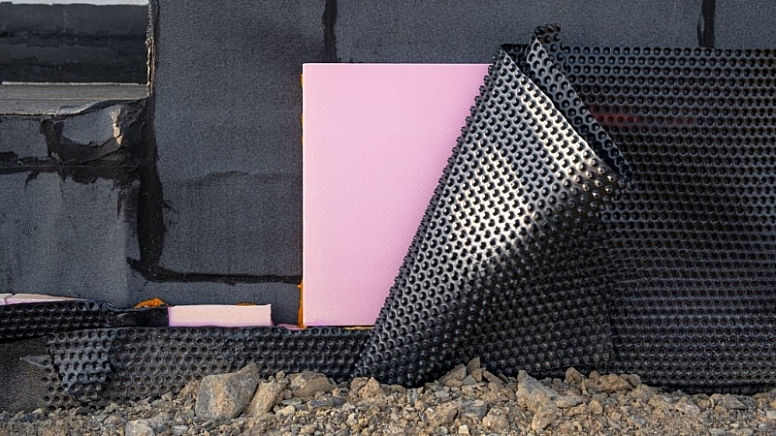
Benefits of Professional Basement Waterproofing Services
Professional basement waterproofing services provide a range of advantages that contribute significantly to the integrity and safety of a home. A key benefit is the prevention of mould growth, which can thrive in damp environments. Mold not only damages property but also poses health risks to residents. By keeping the basement dry, these services maintain a healthy living space.
Structural damage is another major concern that professional waterproofing addresses. Water intrusion can weaken foundations, leading to costly repairs and potentially compromising the entire structure. Professionals use advanced techniques and materials to effectively prevent water from penetrating basement walls and floors, thus preserving the foundation's strength over time.
Investing in professional waterproofing services also enhances energy efficiency within the home. A less humid basement reduces the workload on HVAC systems, leading to lower energy consumption and cost savings. Homeowners can enjoy a more comfortable living environment while also benefiting from reduced utility bills.
The property value is often positively impacted by professional waterproofing solutions. A waterproofed basement is a valuable selling point for potential buyers, as it eliminates worries about water damage and associated problems. This can make the property more attractive in a competitive real estate market.
Lastly, using professional services ensures the waterproofing process is executed with expert knowledge and quality assurance. Professionals are equipped with the skills, experience, and resources needed to handle various challenges, providing confidence that the job is done correctly and efficiently. This level of expertise is difficult to match with DIY methods.
Maintenance Tips for Keeping a Basement Dry
Regular maintenance is crucial for ensuring that a basement remains dry. By implementing a few key practices, homeowners can prevent moisture issues effectively. One essential task is to inspect and clean gutters and downspouts regularly. Ensuring they are free from debris will allow water to flow away from the house and not seep near the foundation.
Another step is to check for cracks in walls and floors. Even small fissures can allow water to enter the basement. Sealing these areas with appropriate waterproofing materials can mitigate potential leaks. It's advisable to schedule routine inspections to catch problems before they escalate.
Installing a reliable sump pump is important, especially in areas prone to heavy rainfall or high water tables. It should be tested periodically to confirm it functions correctly. A backup battery system is recommended to keep the sump pump operational during power outages.
Ventilation also plays a significant role in maintaining a dry environment. Ensuring proper airflow can help reduce indoor humidity levels, which in turn reduces the risk of condensation forming on surfaces. Utilizing dehumidifiers can assist in keeping humidity at optimal levels.
Maintain landscaping around the home by grading the soil to slope away from the foundation. This prevents water from accumulating near the basement walls. Additionally, remove any plant growth too close to the foundation that might direct water toward the basement.
By following these steps, homeowners can significantly reduce the risk of water-related problems in their basements. Regular checks and maintenance ensure long-term protection against moisture intrusion.
Comprehensive Overview of Basement Waterproofing
Waterproofing a basement is a crucial investment in protecting a home from water damage and ensuring structural integrity. Choosing the right waterproofing method relies on understanding environmental conditions and property-specific needs. The diverse techniques available include both interior and exterior options, each offering unique benefits.
Interior methods focus on managing water that infiltrates the basement. These include sealants and drainage systems, which efficiently control moisture to prevent water accumulation within the home. Exterior methods, on the other hand, tackle water issues from the outside by stopping it before it enters. This is typically done through excavation and application of barrier materials like membranes and polymers on the exterior walls.
The cost of waterproofing can vary. Interior solutions such as sealants are often more cost-effective, with costs ranging from $1.00 to $3.00 per square foot. Exterior solutions tend to be more expensive, ranging from $30 to $100 per square foot due to the labour-intensive nature of the work.
Factors influencing the choice of waterproofing method include the type and depth of the foundation, soil conditions, climate, and the severity of existing water problems. A professional assessment is advisable to determine the best course of action tailored to the property's specific circumstances.
Investing in appropriate waterproofing methods not only enhances a property's longevity but also provides peace of mind against potential water-related issues that can lead to significant damage over time.
Frequently Asked Questions About Basement Waterproofing
Basement waterproofing is essential for preventing damage and maintaining the integrity of the home. This guide explores various methods to seal basement walls, highlights effective products for waterproofing, and provides cost estimates for internal waterproofing solutions.
How can I waterproof my basement walls from the inside?
Waterproofing basement walls internally often involves applying sealants designed to block moisture infiltration. Products such as epoxy injections or polymer-based sealants can cover cracks and fill gaps. Installing interior drainage systems or sump pumps can help redirect water away from the basement walls, providing another effective method to keep the area dry.
What are the most effective waterproofing products for basements?
There are numerous products on the market designed for basement waterproofing from the inside. Silicate-based sealers penetrate concrete to create a moisture barrier. Epoxy and polyurethane injections work well for sealing larger cracks. Another option is to use waterproof paints, which can be applied like regular paint to resist moisture buildup on the walls.
What is the estimated cost to waterproof basement walls from the inside?
The cost of waterproofing basement walls from the inside varies based on the methods and materials used. Internal sealants may range from $1.00 to $3.00 per square foot. If more extensive solutions like interior drainage systems are implemented, costs will naturally increase. Homeowners should consider obtaining quotes to determine the best option that fits their budget.

